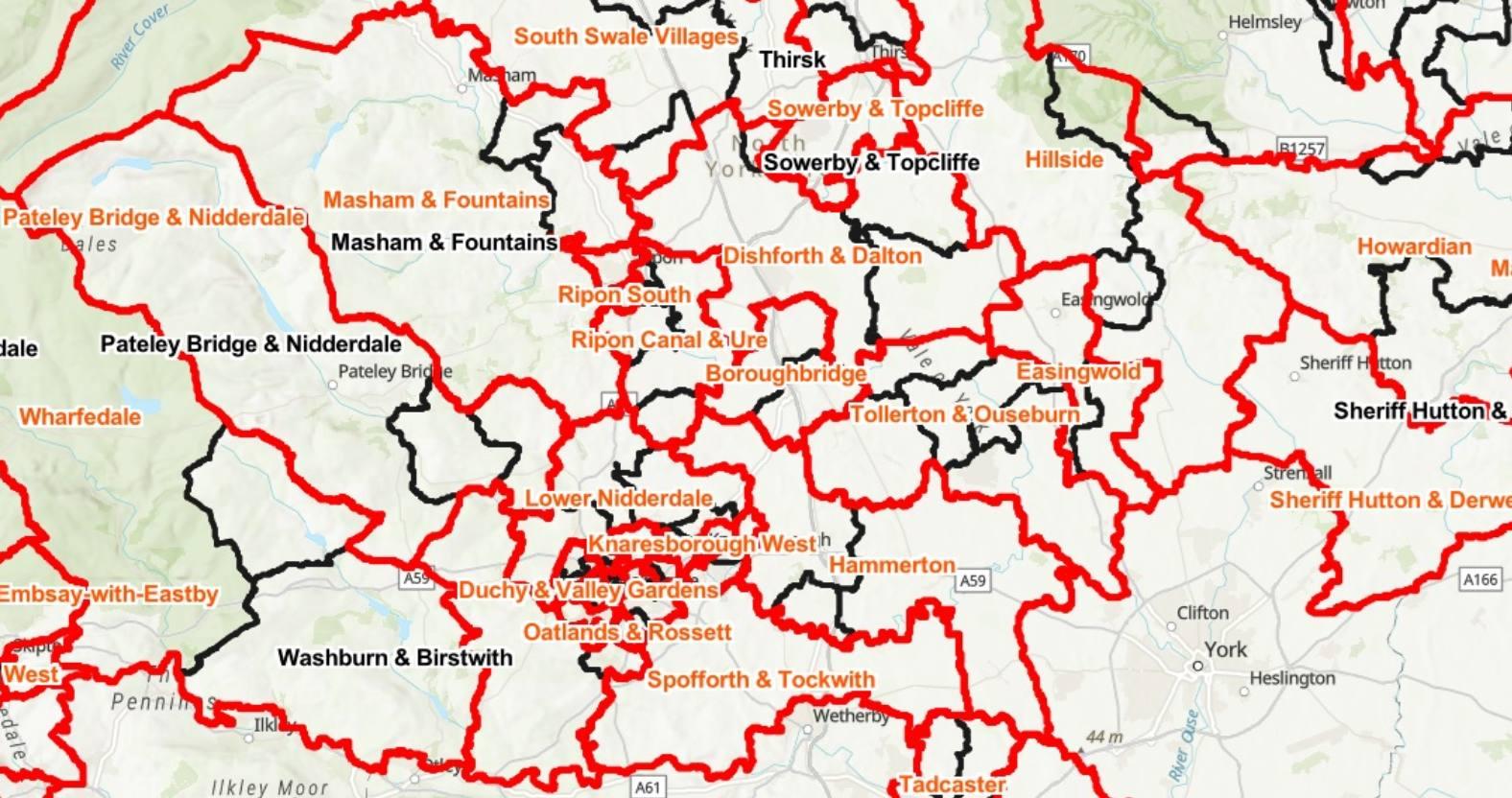Subscribe to trusted local news
In a time of both misinformation and too much information, quality journalism is more crucial than ever. By subscribing, you can help us get the story right.
- Subscription costs less than £1 a week with an annual plan.
Already a subscriber? Log in here.
03
Jun
Boundary Commission seeks views on radical shake-up of electoral areas in Harrogate district

The public’s views are being sought on a radical boundary shake-up that is likely to affect nearly every electoral division in North Yorkshire.
Between October and December last year, the Local Government Boundary Commission for England held a preliminary round of consultation, when political parties and local residents submitted their suggestions for how the electoral map should look.
Having taken those ideas into account, and following a virtual tour of the county, the commission has published a set of draft proposals and is inviting feedback.
It wants to know whether the proposed divisions reflect local communities, whether the proposed names of the divisions are appropriate, and how the proposals could be improved.
The proposals put forward for consideration include:
- The Duchy area of Harrogate, which is currently part of the Coppice Valley & Duchy division, would be separated from Coppice and joined with the Cold Bath Road area to form a new Duchy & Valley Gardens division.
- Harrogate’s Jennyfields estate would have its own division, which would include Oakdale Golf Club.
- The boundary between Knaresborough West and Knaresborough East would be redrawn, so that the Aspin Lane and Thistle Hill areas were in Knaresborough East, and the Boroughbridge Road area was in Knaresborough West
- The Washburn & Birstwith division would be split, with the eastern part joining Pannal – which is currently part of Oatlands & Pannal – to form a Birstwith & Pannal division, and the western part – the Washburn Valley – forming part of the Wharfedale division.
- Summerbridge – currently in the Washburn & Birstwith division – would be included in the Pateley Bridge & Nidderdale division.
- A new Lower Nidderdale division would be created from the south-eastern part of Masham & Fountains and the south-western part of Boroughbridge & Claro.
- The eastern portions of Ripon Ure Bank & Spa and Ripon Minster & Moorside would become part of a new Ripon Canal & Ure division, which would also include Sharow, Bishop Monkton and Burton Leonard.
There are many other changes not outlined here, but they can all be viewed on an interactive map on the commission’s website here.
The consultation runs until next Monday (June 9).
Number of councillors
Across North Yorkshire, the Local Government Boundary Commission for England has recommended that the number of councillors be reduced by one, from 90 to 89. This is the number that was recommended by the Conservative-led North Yorkshire Council.
The council’s Liberal Democrats and Liberal Group had suggested an increase to 97 councillors, citing the heavy workload faced by current members, who are managing responsibilities previously handled by over 300 local councillors.
North Yorkshire Council’s Labour Group, supported by the Green Party Group, had proposed increasing the number of councillors higher still, to 108, in order to adequately represent the region’s distinct urban, rural and coastal areas.
In drawing up its recommendations, the Local Government Boundary Commission for England aims to ensure that division boundaries are strong and clearly identifiable.
But perhaps more importantly, its recommendations must by law not be based only on how many electors there are now, but also on how many there are likely to be in the five years' time.
So in its current recommendations, the commission has tried to keep the number of electors represented by each councillor as close as possible to the average for the council: 5,818.
When the number of electors per councillor in a division is within 10% of the average for the authority, the division is deemed to have ‘electoral equality’. All but one of the commission’s proposed divisions for North Yorkshire are forecast to have electoral equality by 2030.
Following the current consultation period, the seven-member commission, which includes former Harrogate Borough Council chief executive Wallace Sampson, will take into account all submissions and suggestions, and will also visit the district in person over the summer.
The commission will publish its final recommendations on Tuesday, September 2.
0